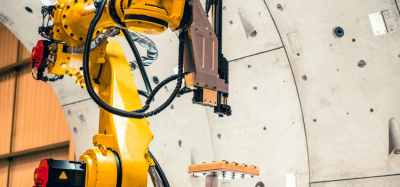Accelerating rail digital transformation with train-to-ground communications
Posted: 15 November 2021 | Karsten Oberle, Nokia | No comments yet
Karsten Oberle, Head of Rail at Nokia, explains why reliability is fundamental to the latest communications solutions in keeping pace with rail safety and security demands.


Why do rail operators need secure, resilient broadband communications to meet today’s challenges?
Metro and urban railways are facing greater demand, as urban populations expand, and local governments encourage the use of sustainable transportation. In response, many operators are deploying technologies and applications that help increase transport capacity and improve operational performance – e.g., communications-based train control (CBTC), smart video surveillance, and a variety of on-board and in-station applications.
These applications can enhance efficiencies and meet new demands but deploying them also brings some significant complexity. Typically, each application runs on a dedicated communications network infrastructure, which adds not only complexity, but also cost for deployment and operation. They often put greater burdens on existing railway communications networks, which are often not optimised for safety-critical and safety-related communications.
…many operators are deploying technologies and applications that help increase transport capacity and improve operational performance…
A secure and highly resilient rail communications solution can play a crucial role in addressing these issues, making it easier for metro–urban railway operators to use new applications to reach their transport capacity and operational targets. However, it’s important for this solution to provide extreme reliability, QoS management and performance, so that operators can provide simultaneous support for all safety-critical, safety-related, and passenger-centric applications.
What are the benefits of these communications solutions?
Secure, reliable solutions can help metro-urban railway operators keep pace with growing safety, security, efficiency, and passenger demands. To enhance operations, they make it easier to use applications such as smart video surveillance, CBTC, and predictive maintenance to boost safety and operational efficiency. They also enable upgrades to passenger amenities, including connectivity and on-board and in-station services. Here are some typical use cases:
- Train control and advanced operational communications that can increase capacity and enrich services
- Video surveillance applications to help monitor critical assets and keep passengers and personnel safe
- Video analytics solutions that can automatically identify anomalous behaviour and alert safety and security teams in real time
- Passenger services, such as connectivity, online planning and ticketing, full in-station and on-board broadband, plus real-time alerts, directions, and updates delivered on mobile devices
- Predictive maintenance applications that combine IoT asset management and advanced data analytics for sensors deployed on trains and trackside equipment, which can help reduce costs, increase asset utilisation, enhance safety, and minimise delays.
What is the importance of ‘extreme resilience’ in train-to-ground solutions?
A communications network outage can affect safety-critical applications, resulting in disruptions to train services, passenger delays and dissatisfaction, economic loss, and damage to a city’s reputation. For these reasons, operators need a train-to-ground network with the utmost resiliency.
A communications network outage can affect safety-critical applications, resulting in disruptions to train services, passenger delays and dissatisfaction, economic loss, and damage to a city’s reputation.
The Nokia Train to Ground solution brings mission-critical performance to metro–urban rail communications with an intelligent switching algorithm developed by Nokia Bell Labs. This unique algorithm provides assured bandwidth, guaranteed resiliency, and low latency by enabling capacity aggregation over multipath, multi-technology, concurrent access backhauls. With these capabilities, operators get reliable, simultaneous support for a wide range of applications focused on safety, as well as serving passengers.
Our solution also takes advantage of the prioritisation capabilities of LTE to provide guaranteed quality of service (QoS) for mission-critical applications.
With multiple active radios, the active on-board equipment simultaneously connects to multiple LTE and Wi-Fi networks and aggregate all their radio links, so data can be spread across all of them. In addition, the solution can include active-active radio redundant pairs, which significantly increases the number of radio links available for transmission. If one radio link fails, it dynamically adapts to minimise the service impact.
This multi-network/multi-path approach provides higher bandwidth capacity, better bandwidth utilisation and stronger resiliency, improving the performance of on-board applications.
Why is flexibility important in the Nokia Train to Ground solution?
The Nokia Train to Ground solution can be deployed over a private LTE network, an existing Wi-Fi network or even a hybrid network including as well CSP trackside network.
Our modular solution uses an open architecture with standard interfaces and protocols. This gives railway operators a simpler way to keep up with growing internet usage, adapt to operational needs, and expand services for passengers and staff. They also have more flexibility when working with third-party partners to develop innovative solutions for important use cases.
The Nokia Train to Ground solution can be deployed over a private LTE network, an existing Wi-Fi network or even a hybrid network including as well CSP trackside network. By using LTE, operators can provide pervasive, ultra-reliable, high-capacity connectivity that meets the demands of mission-critical in-station, on-board and trackside applications. It also helps accelerate digital transformation and includes a simple upgrade path to 5G, which offers investment protection.
Where are these solutions deployed, and how are they performing?
The Nokia Train-to-Ground solution has been deployed in several metro railways. For example, WESTbahn is using it for an expanded fleet of intercity trains operating on the Vienna/Salzburg line. This solution is now providing an enhanced customer experience with continuous, resilient wireless broadband connectivity for passengers and on-board operations.
The Société du Grand Paris has also selected a consortium comprising Nokia and ENGIE Solutions to deploy an LTE-based Nokia solution for three new automated lines of the Grand Paris Express. Taking an innovative approach, the Société du Grand Paris is replacing the technologies traditionally used in metro transport with LTE – a more highly reliable, secure, broadband technology.
How can train-to-ground solutions accelerate railways’ digital transformation?
Nokia has designed an LTE-based train communications solution with today’s challenges in mind, while looking ahead to the future. To meet current needs, the Nokia Train to Ground solution enables operators to build a scalable, secure, future ready and highly resilient broadband communications foundation for both new, and existing, railway technologies and applications.
…when it’s time to take the next step, our solution allows a smooth transition from LTE to 5G.
As a result, operators can optimise TCO by converging all their safety-critical and safety-related applications on one LTE-based network, along with applications that enhance passenger services. Then, when they embrace new applications to gain more oversight, such as trackside monitoring, the LTE network can evolve to support standards-based technologies that connect trackside sensors. Operators can also harness mission-critical push-to-talk and push-to-video capabilities to migrate legacy PMR-based applications over the train-to-ground network.
In the coming years, when it’s time to take the next step, our solution allows a smooth transition from LTE to 5G. All these evolutionary changes are possible because LTE is an open-standard, 3GPP-based wireless technology, which is deployed globally with a vast and diverse ecosystem to enrich its use cases.








